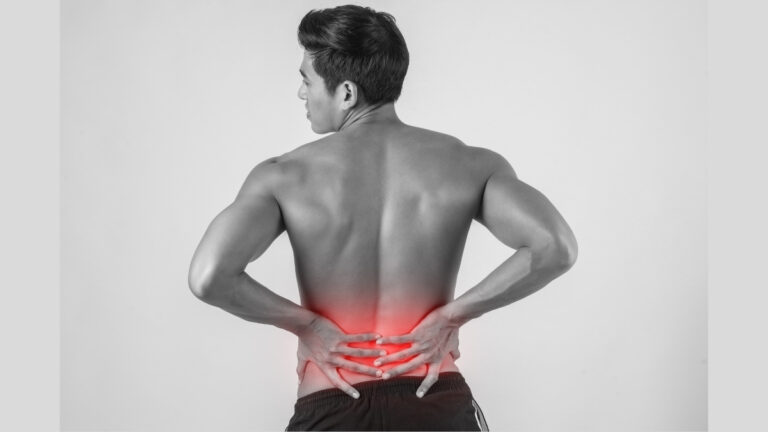Sitting All Day? This Tiny Habit Is Causing Your Leg Pain (Fix It in 5 Minutes!)

That nagging ache in your legs isn’t just fatigue—it’s your body screaming for help. Hours of sitting silently sabotage your muscles, cutting off circulation and tightening joints. What feels like harmless desk time actually weakens your glutes, strangles your sciatic nerve, and turns your hips into concrete. The worst part? You might not notice the damage until sharp pains start shooting down your legs.
Here’s the Good News
Relief takes just minutes—no gym or equipment needed. These 7 targeted fixes work while you’re still at your desk, reversing damage before it becomes chronic pain. Your legs will thank you by 3 PM. Keep reading—your pain-free workday starts now.
1. The Hidden Culprit: How Sitting Weakens Your Glutes and Quadriceps
Your backside and thighs weren’t designed to be couch potatoes. When you sit all day, your glutes and quadriceps essentially go on strike. These powerhouse muscles weaken from lack of use, forcing smaller stabilizers to pick up the slack.
The result? Achy knees, stiff hips, and that familiar burning sensation when you finally stand up. Glute bridges wake up these sleeping giants by mimicking the natural hip extension your body craves.
How to Perform Glute Bridges:
- Lie on your back with knees bent and feet planted firmly
- Drive through your heels to lift hips until body forms straight line
- Squeeze glutes hard at the top for 2 seconds
- Lower slowly, maintaining tension
Pro Tips:
• Place a yoga block between knees to activate inner thighs
• Try single-leg variations once basic form feels easy
• Time it right – do these before long meetings to prep your muscles
• Pair with wall sits for comprehensive lower body activation
2. Blood Flow Breakdown: Why Sitting Causes Poor Circulation in Legs
Ever noticed how your legs feel like concrete blocks after hours at your desk? That’s stagnant blood pooling in your lower extremities. Your calf muscles normally act as secondary hearts, pumping blood upward with each step.
Without movement, circulation slows to a crawl. Seated leg marches trick your body into thinking you’re walking, jumpstarting that crucial blood flow.
How to Perform Seated Leg Marches:
- Sit tall with both feet flat
- Lift right knee toward chest while keeping torso upright
- Lower and immediately lift left knee
- Maintain steady rhythm like you’re marching in place
Circulation Boosters:
• Add ankle circles every 10 reps to hit all angles
• Try compression socks if you’re stuck sitting for hours
• Stand and shake out legs every 20 minutes
• Hydrate well – dehydration thickens blood
3. Sciatic Nerve Squeeze: The Silent Pain Trigger from Prolonged Sitting
That shooting pain down your leg isn’t just random – it’s your sciatic nerve screaming for relief. Sitting compresses this thick nerve bundle, especially if you’re slouching.
Over time, the surrounding muscles tighten like knots around a rope. Nerve flossing gently coaxes the nerve through its pathway, easing irritation and restoring mobility.
How to Perform Nerve Flossing (Sciatic Glide):
- Sit upright at chair’s edge
- Extend one leg straight with heel on floor
- Nod head forward while pointing toes
- Tilt head back while flexing foot toward shin
Nerve Care Tips:
• Move slowly – jerky motions aggravate nerves
• Combine with piriformis stretches for better results
• Use a tennis ball to massage tight glutes first
• Avoid wallet in back pocket – it adds pressure
4. Tight Hip Flexors: The Overlooked Link Between Sitting and Lower Back/Leg Pain
Your hip flexors shorten like overstretched rubber bands when you sit too much. This pulls your pelvis out of alignment, creating a chain reaction of discomfort.
The standing hip flexor stretch counters this by lengthening these critical muscles. You’ll immediately notice easier walking and less lower back strain.
How to Perform Standing Hip Flexor Stretch:
- Step into staggered stance with back knee slightly bent
- Tuck pelvis under like you’re closing a jacket zipper
- Lean forward until you feel tension in front hip
- Keep chest proud and core engaged
Hip Helpers:
• Hold for 30 seconds per side after bathroom breaks
• Strengthen opposing glutes with bridges
• Try the “90/90” stretch for deeper release
• Set phone reminders to stand every 30 minutes
5. Ankle Stiffness: How Immobility Leads to Calf Pain and Swelling
Locked ankles from constant sitting create a ripple effect of problems. Without movement, calf muscles tighten and joints lose lubrication, making every step feel stiff.
Fluid pools around stagnant ankles, causing that uncomfortable puffiness. Ankle alphabet rotations restore mobility by gently working the joint through its full range.
How to Perform Ankle Alphabet Rotations:
- Lift one foot slightly off the ground
- Trace each letter of the alphabet with your big toe
- Keep movements slow and controlled
- Switch feet after completing the alphabet
Ankle Care Tips:
• Do this while on phone calls or watching TV
• Massage calves before rotating for better results
• Wear shoes with flexible soles when possible
• Try pointing and flexing feet between rotations
6. Posture Perils: Why Slouching at Your Desk Worsens Leg Discomfort
Slumped shoulders don’t just hurt your back – they sabotage your legs too. Poor posture alters weight distribution, forcing certain muscles to work overtime.
The seated posture reset realigns your spine and takes pressure off overloaded leg muscles.
How to Perform Seated Posture Reset:
- Sit at edge of chair with feet flat
- Interlace fingers behind head
- Arch upper back while pulling elbows back
- Hold for 3 breaths, feeling chest open
Posture Pointers:
• Adjust monitor height to eye level
• Place a small pillow behind lower back
• Set reminders to check posture hourly
• Strengthen upper back with rowing motions
7. The 5-Minute Fix: A Step-by-Step Routine to Reverse Damage Instantly
Combining targeted moves creates a quick rescue plan for desk-weary bodies. This dynamic sequence hits all the trouble spots – from stiff hips to sluggish circulation.
Done consistently, it prevents pain before it starts.
How to Perform the Dynamic Flow Sequence:
- 10 Glute bridges
- 30 seconds seated leg marches
- 5 nerve flosses per leg
- 20-second hip flexor stretch each side
- Ankle rotations for 30 seconds
Additional Tips For All Article:
- Do glute bridges daily to reactivate weak muscles from sitting.
- March in place every hour to boost circulation in stiff legs.
- Floss your sciatic nerve to relieve shooting pains from desk slouching.
- Stretch hip flexors to undo tightness from prolonged sitting.
- Trace the alphabet with your ankles to prevent stiffness and swelling.
- Reset your posture hourly to take pressure off legs and back.
- Try the 5-minute mobility flow to reverse damage fast—no gym needed.
Final Thought: Your Pain-Free Workday Starts Now
Those throbbing legs and stiff hips aren’t just annoying—they’re your body’s SOS signal. Sitting all day isn’t just uncomfortable; it’s slowly breaking down your muscles, nerves, and circulation. But here’s the game-changer: You don’t need hours at the gym to undo the damage.
With just 5 minutes and these science-backed moves, you can reset your body, boost blood flow, and silence that nagging pain for good. Stop blaming your chair—your legs deserve better. Try these fixes today and feel the difference before your next coffee break. Your future self (and your legs) will thank you. Click to reclaim your comfort—now!






